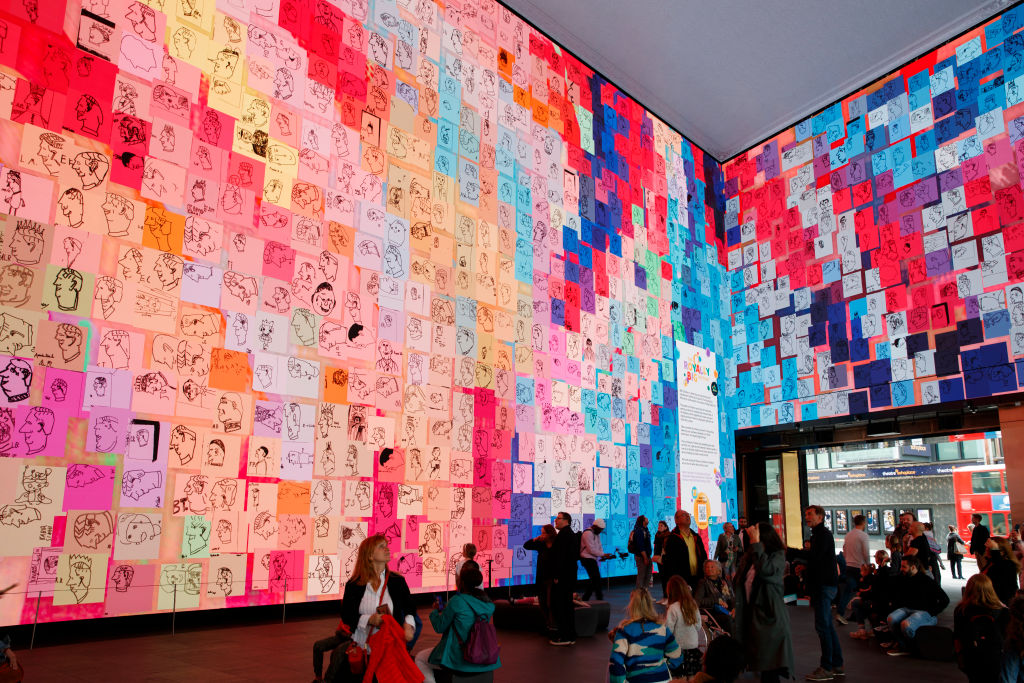US Supreme Court Rules Against Warhol Foundation in Closely Watched Copyright Case
The US Supreme Court ruled against the Andy Warhol foundation in the closely-watched copyright infringement lawsuit filed against the photographer Lynn Goldsmith, a decision that could set a precedent for cases involving the fair use doctrine.
The Justices ruled 7 to 2 in Goldsmith’s favor, in the decision released Thursday. Justice Sonia Sotomayor wrote in the majority opinion that the photographer’s “original works, like those of other photographers, are entitled to copyright protection, even against famous artists.”
Writing for the dissent, Justice Elena Kagan, seconded by Chief Justice John G. Roberts Jr., said that the decision “will impede new art and music and literature. It will thwart the expression of new ideas and the attainment of new knowledge. It will make our world poorer.”
The legal dispute began in 2016 when the Andy Warhol Foundation preemptively sued Goldsmith after she raised concerns over the use of her 1981 photograph of the pop star Prince. Goldsmith’s photograph of Prince was shot on assignment for Newsweek. The magazine didn’t end up using the photos, but Goldsmith retained the licensing for future use.
On commission for Vanity Fair, Warhol used the photograph as a reference, allegedly without Goldsmith’s knowledge of the project. Those illustrations were copyrighted by Warhol and have, since his death in 1987, been sold and reproduced for hundreds of millions of dollars. This, she alleged, was copyright infringement.
In 2017, the Warhol Foundation preemptively sued Goldsmith and, in the years since, the case has made its way through the lower courts, eventually reaching the U.S. District Court for the Southern District of New York, who ruled in 2019 in favor of the Andy Warhol Foundation. Last year, the Appellate Court, which hears appeals and is usually “the last word” in most cases, reversed the Southern District Court’s decision.
The Supreme Court’s decision was expected to hinge on whether the justices deemed Warhol’s use of Goldsmith’s image as “fair use,” as the Warhol Foundation has argued.
“Fair use” is a legal doctrine that allows the limited appropriation of intellectual property for purposes such as scholarship, news reporting, and commentary. According to the U.S. Copyright Office, its aim is to “promote freedom of expression”.
In the last decade, it has become a central defense for artists who rely on appropriated images, such as Jeff Koons and Richard Prince, both of whom have been accused of overstepping the limits of the doctrine.
Only last week, a federal judge ruled that Prince’s series of artworks titled “New Portraits,” comprised of enlarged Instagram screenshots reproduced on canvas and paired with his pithy commentary, “indeed tested the boundary between appropriation art and copyright infringement.” Prince previously faced cases in the Southern District of New York brought by two photographers whose original images were used without permission by the artist, Patrick Cariou and Donald Graham.
Prince, like the Warhol Foundation, argued in both cases that his practice is covered by fair use exceptions. The Cariou case, which spent years going back and forth between lower and higher courts, came down to whether a “reasonable observer” would find Prince’s artworks use of the material to be sufficiently transformative, defined here as imbuing a “new expression, meaning, or message.
The issue has proven divisive in the art community. High-profile figures including Barbara Kruger and curator Robert Storr jointly filed an amicus curiae brief on behalf of the Warhol Foundation. The pair argued that artists have always referenced and copied each other’s work, with Kruger citing her own work as a primary example.
Kruger and Storr argued that a tightening of the fair-use doctrine would be detrimental to the creative process. Theoretically, artists and content creators, fearing costly litigation, may abstain from using or referencing copyrighted work and thus limiting cultural exchange and discourse.
However, critics have raised concerns over precedents being set by a judge determining whether a work is “transformative.”
“The district judge should not assume the role of art critic and seek to ascertain the intent behind or meaning of the works at issue,” Judge Gerard E. Lynch wrote. “That is so both because judges are typically unsuited to make aesthetic judgments and because such perceptions are inherently subjective.”
Regarding the court’s decision, the Andy Warhol Foundation said in a statement: “We respectfully disagree with the Court’s ruling that the 2016 licensing of Orange Prince was not protected by the fair use doctrine. At the same time, we welcome the Court’s clarification that its decision is limited to that single licensing and does not question the legality of Andy Warhol’s creation of the Prince Series in 1984. Going forward, we will continue standing up for the rights of artists to create transformative works under the Copyright Act and the First Amendment.”



